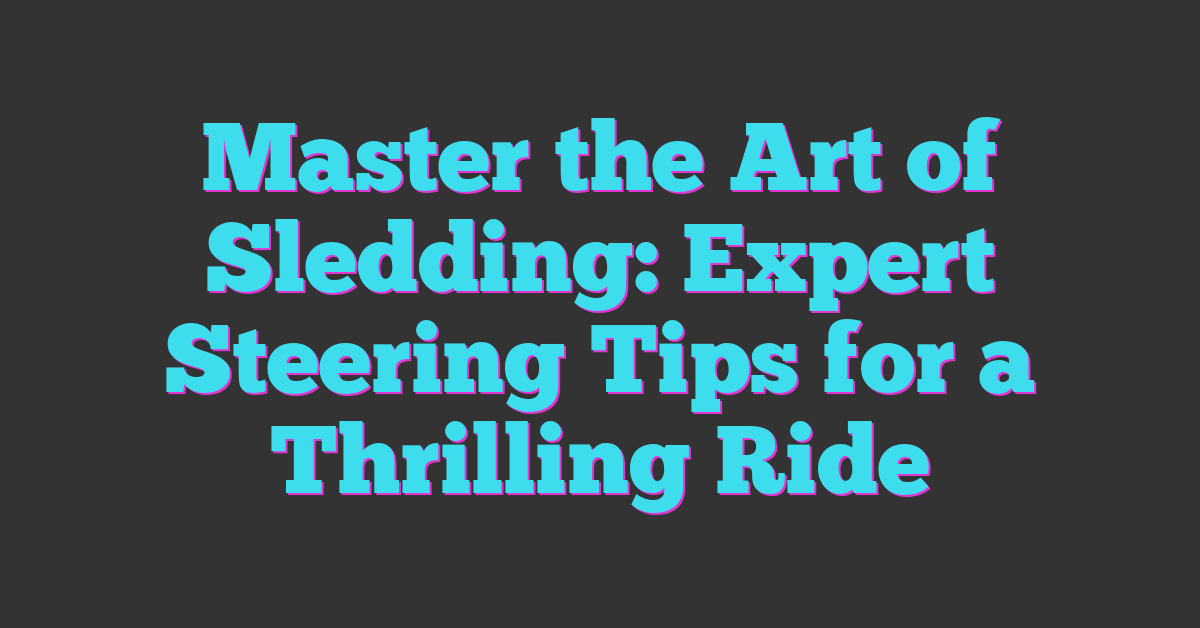If you’re eager to soar through the air with style and precision, mastering ski jumps is essential. Whether you’re a beginner or looking to refine your technique, the right practice methods can make all the difference. It’s not just about the jump itself; it’s about building confidence, strength, and the skills needed to land safely.

Overview of Ski Jumps
Ski jumps are thrilling, essential components of winter sports that combine skill, bravery, and technique. They involve launching off a ramp, executing aerial maneuvers, and landing smoothly on snow. Understanding the key elements of ski jumps is crucial for enhancing performance and safety.
Ski jumps consist of three primary phases: approach, takeoff, and landing.
- Approach: You build speed while navigating the slope towards the jump. Mastering your stance at this phase ensures stability and control.
- Takeoff: As you reach the jump’s edge, you transition from uphill to airborne. Timing your weight shift plays a vital role in achieving optimal height and distance.
- Landing: Following the jump, proper technique enables a smooth descent. Aim for a balanced landing stance to absorb the impact effectively.
Practicing ski jumps not only improves your aerial skills but also boosts your confidence on the slopes. By mastering the steps, you enhance your overall snow sports experience.
Importance of Practicing Ski Jumps
Practicing ski jumps is essential for anyone passionate about snow sports. Mastering these jumps not only elevates your skills but also boosts your confidence on the slopes.
Benefits for Skiers
- Improved Technique: Regular practice sharpens your technique. You’ll refine your body positioning, weight distribution, and timing.
- Enhanced Confidence: As you master each jump, your confidence grows. This increased self-assurance translates to all aspects of skiing.
- Physical Conditioning: Ski jumps demand agility, strength, and flexibility. Training enhances your overall fitness, which benefits other snow sports.
- Safety Awareness: Practicing jump techniques teaches you how to assess risks and handle unforeseen circumstances. You’ll become more aware of your surroundings, leading to safer rides.
Enhancing Performance
- Optimal Aerial Skills: Frequent practice helps you develop precise aerial control. You’ll gain the ability to adjust mid-air for better landings.
- Stronger Takeoff: Perfecting the takeoff phase allows for more significant height and distance. You’ll experience a sense of freedom as you soar through the air.
- Consistent Landings: Working on landing techniques leads to smoother descents. Consistency in your landings prevents injuries and builds confidence.
- Competitive Edge: Skillful jumps can give you an advantage in competitions. Judges often prioritize technique and execution, so practice pays off.
Best Ways to Practice Ski Jumps
Practicing ski jumps effectively enhances your aerial skills and boosts your confidence on the slopes. Here are several methods tailored for every skill level.
Techniques for Beginners
- Dry Land Training: Focus on strength and balance exercises, such as squats and lunges. Use a trampoline or a jumping mat to simulate the jumping motion.
- Jumps on Smaller Hills: Start on smaller jumps to gain comfort. Concentrate on technique, emphasizing the weight shift and landing posture.
- Video Analysis: Record your jumps and analyze your takeoff and landing. Compare your form against professional videos. This helps identify areas for improvement.
- Body Position Drills: Practice your body position off the slopes. Maintain a relaxed posture with slight bends at the knees and elbows to prepare for takeoff and landing.
Advanced Practice Methods
- Aerial Acrobatics: Incorporate tricks like flips or spins for more advanced aerial skills. Focus on control and precision, ensuring proper landing techniques.
- Enhanced Speed Training: Use longer approaches to master speed management. Start with shorter distances and gradually increase as your confidence builds.
- Pairs or Group Training: Work with a partner or in a group. An instructor can provide valuable feedback and support during complex maneuvers.
- Variable Terrain Practice: Challenge yourself on different jump styles and conditions. This builds adaptability and hones your technique in various environments.
Practicing with these methods ensures you strengthen your skills, making every jump feel effortless and exciting.
Safety Precautions While Practicing
Practicing ski jumps requires a focus on safety to ensure an enjoyable experience. Here are some essential safety precautions:
- Wear Protective Gear
Always wear a helmet, goggles, and protective padding. A helmet reduces the risk of head injuries, while goggles protect your eyes from snow and wind.
- Choose the Right Location
Select a jump site designed for practice, ensuring it’s free from obstacles. Avoid crowded areas where collisions may occur.
- Check Equipment
Inspect your skis, bindings, and boots for any damage before hitting the slopes. Ensure they fit properly and function correctly to avoid accidents.
- Practice with a Spotter
Having a friend watching your practice sessions can enhance safety. A spotter can alert you to potential hazards or provide assistance in case of falls.
- Warm-Up Before Jumping
Begin with a proper warm-up to prevent injuries. Light exercises and stretches help prepare your muscles for the demands of ski jumping.
- Start Small
Limit initial practice to smaller jumps, gradually progressing to larger ones as your skills develop. This method helps build confidence and control.
- Know Your Limits
Stay within your skill level. Avoid attempting jumps that exceed your experience to reduce the risk of injury.
- Learn Fall Techniques
Mastering how to fall safely can prevent severe injuries. Practice rolling to absorb impact instead of bracing against the ground.
- Stay Hydrated
Keep your body hydrated during practice to maintain energy levels and focus. Dehydration can lead to fatigue, increasing the likelihood of accidents.
- Follow Weather Conditions
Pay attention to weather forecasts. Avoid practicing in high winds, poor visibility, or icy conditions, as these can significantly affect your control and stability.
By prioritizing safety during practice sessions, you enhance the likelihood of a fun and rewarding experience in ski jumping. Embracing these precautions allows you to focus on your skills, building confidence in the air and landing smoothly.
Recommended Equipment for Ski Jumps
Choosing the right equipment plays a crucial role in mastering ski jumps and enhancing your overall experience on the slopes. Here’s a breakdown of essential gear to consider:
- Skis
Opt for lightweight, high-performance skis designed specifically for jumps. Look for models with a wide tip for better lift and stability.
- Bindings
Invest in reliable bindings that provide optimal energy transfer for takeoffs. Ensure they are adjustable and secure to match your skill level.
- Boots
Select boots that offer a snug fit and excellent support. Look for options with a flex rating suited to your jumping style, prioritizing comfort and responsiveness.
- Helmet
Always wear a certified helmet that protects your head during jumps. Choose one with good ventilation to keep you comfortable throughout your session.
- Goggles
Equip yourself with goggles providing clear visibility and UV protection. Look for anti-fog features for optimal performance in varying weather conditions.
- Protective Gear
Consider additional pads, such as impact shorts and knee pads, to protect against falls. This gear boosts your confidence as you practice jumps and try new tricks.
- Layered Clothing
Dress in moisture-wicking base layers, insulated mid-layers, and waterproof outer layers. Proper clothing keeps you warm and dry while allowing freedom of movement.
- Jump Trajectory Marker
Use markers to gauge your takeoff angles and landing zones. Setting them up on the slope helps you refine your technique during practice.
Having the right equipment tailored to your needs enhances safety and boosts your confidence. Invest in quality gear, and you’ll enjoy your time on the slopes even more while honing your skills.
Conclusion
Practicing ski jumps is all about finding joy in the process while enhancing your skills. As you master the approach takeoff and landing phases you’ll not only build confidence but also enjoy the thrill of soaring through the air.
Remember to prioritize safety and invest in the right equipment to keep your experience fun and secure. Whether you’re a beginner or an advanced skier there’s always room for improvement. Embrace the challenge and celebrate your progress.
With dedication and the right practice methods you’ll soon be flying high and landing smoothly on the slopes. So gear up get out there and enjoy every jump!
















